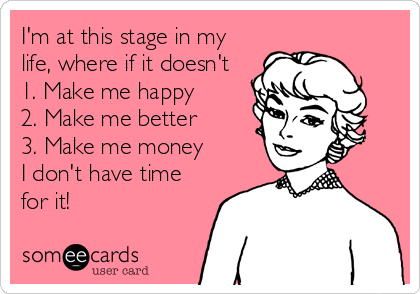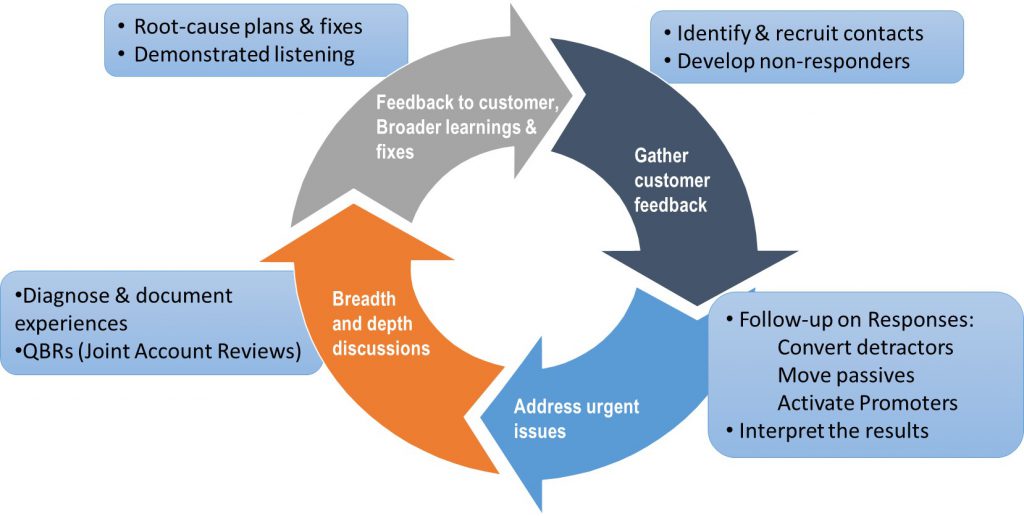Search Waypoint Resources
Is Your NPS Cheating You? (Part 3)

“Survey” is a 4 letter word.
Welcome to the final installment of this 3-part series about improving client relationships. In this installment we’ll discuss how to improve the rates of response you get from “feedback requests.” (“Survey” is a dirty word, but more on that later).
Editor’s note: Here is a quick one-sentence recap of part one on Response Rates; not including non-respondents (the disengaged) in your calculations is messing up your NPS data. If you didn’t read it, feel free to check it out or at least skim it here.
Here is another quick one-sentence recap, but on part two; To get good feedback with high participation (response) rates, you need a good list. If you didn’t read this one either, feel free to check it out, too.
Not feeling the love on your requests?
How to you get more responses on your requests? First let’s point out some reasons why people AREN’T responding.
- Time. Who has the time for this sort of thing? This one is really split into two sections.
- People that simply don’t have (or don’t think they have) the time to spare to fill out a feedback form.
- People that might have a few moments, but think: ”why bother.” These people think it’s a giant waste of time. There’s no value in it for them. They see it as just aggregated survey data that won’t address specific issues. Basically they are asking themselves: “What’s in it for me?”
- Fear of fake. Is this real or is it spam? Or worse, is it a virus or a Trojan? If they have to choose between the possibility of helping you out or giving a digital STD to their PC, the choice is pretty easy.
- Who is this? Does the contact even recognize the sender? No? Hello Mr. Delete button.
- Everyone hates a survey. See number 1 (time). People won’t waste time on a survey. Everyone knows a survey is stupid.
Curing what ails you. (Or at least what ails your response rate.)
So those are the big reasons you aren’t getting the response rates you desire. Now let’s talk about how to fix the problems. I’ll address each one individually:
1: Time. This is the big one. There are a couple ways to help cure this one.
- First and foremost, convince the recipients that this is to gather feedback. And when you receive said feedback, you pinky-swear that you will make the appropriate adjustments based on their responses. We’ll hit this more on item number 4 (Everyone hates a survey).
- Let them know upfront how long it will take. Keep it under 3 minutes and stick to that time commitment.
- Vet the contact list. Of course someone will think it’s a waste of time, if they aren’t even the person who should be answering.
Make sure it’s worth people’s time. Remember the value equation – the numerator and denominator for “value” – is the return on time invested in filling out your feedback request worthwhile? You are only asking for 2 or 3 minutes of their time, use that time wisely.
Don’t have irrelevant questions. You know those question where _ NA is a possible answer? Use those sparingly. Sure that makes it easy for you, but what about for your customers? They steal from your precious “survey real estate” since you already promised not to take too much of their time.
Instead, use role-based questionnaires. So when you design the survey create a batch of questions. Let’s say 15. Then pull questions based on target. So each target would get questions tailored for them. So a simple graph of who gets what would look like this:
- Decisions makers get questions 1, 2 & 5
- Key influencers get questions 1, 6 & 12
- End users get questions 1, 4 & 8
2: Fear of Fake. Simple, prove it’s real. Here are some ways to accomplish that:
- Send a pre-note. Just a simple memo basically saying: Hey, when you check your email soon, there will be a form in it and it would be great if you could fill it out.
- Have the pre-note come from someone they know and trust. They can let the target know where/who it’s coming from.
- Let them know when it’s coming. i.e Tomorrow.
3: Who is this? Include information that proves who you are and that they know you. Things like:
- Their name
- Their role in the company
- Include phrases like: “We know you are a regular user of XXXX product.”
4: Everyone hates a survey. In keeping with the easily-readable bullet format, I’ll provide a bullet list to help overcome this roadblock.
- Don’t call it a survey. Instead, call it what it really is: a feedback request. Consider naming/branding your program. For an expanded discussion, again, see part 2 of this series.
- Be explicit about how you will review their feedback and then what steps you will take to address it. Something like: “In the past we’ve been able to do X, Y, Z. Based on your feedback, and we aim to continue to invest in addressing our customers’ needs. And unless you ask us not to, we will follow-up with you.”
Close the loop.

“Survey” is a 4-letter word. Treat it like the gold that it is by following-up appropriately and you’ll not only improve participation (response) rates, but also strengthen the relationships with your customers.
After you’ve correctly sent out your feedback request (now that you know the way to do that), and you’ve reviewed all submissions, make sure you close the loop.
Explain to the respondents that prioritizing the right improvements is a collaboration.
Set Expectations. This breaks down into 3 sets of expectations:
- Expectations about what you can do to make improvements based on their feedback.
- Expectations about what you can’t do based on the same feedback. Obviously there are some things that simply can’t be done. We’d all love tools that do 110% of our job with the push of a single keyboard key. Sorry, maybe next century.
- Expectations about things you and your client need to do together. Example: Your feedback shows that people who have not had formal training on your product are having much more difficulty than the ones that do. You and the client need to coordinate to create a training schedule for appropriate personnel.
When it’s over, it’s over. Upon completion of the job let everyone know what’s happening. That includes the people who didn’t participate. A simple: “Maybe next time you can help out, but in the meantime, here’s what’s going on …”
Who does/did what? During this process you’ve probably discovered (even stumbled upon) some roles you either didn’t know existed or if you did know, you didn’t know who filled those roles. Now you do. Make sure you update your lists accordingly.
So there you have it. You now know how to properly evaluate client relationships, how to create a good target list and how to increase your response rates. So go ahead and get some meaningful input from your clients so you can improve your products and services.
And then do what you promised.
